Strawberry skin is a term used to describe the appearance of small, raised bumps or dots on the skin, resembling the texture of a strawberry. It is also known as "chicken skin" or Keratosis Pilaris. This condition is typically found on the upper arms, thighs, and buttocks, but can also appear on the face, back, and other parts of the body.
Strawberry skin is caused by the build-up of keratin, a protein that protects the skin from infections and other harmful substances. When the excess keratin clogs the hair follicles, it leads to the formation of small, rough bumps on the skin.
While there is no cure for strawberry skin, there are several ways to manage the condition and improve the appearance of the skin. Some effective treatments include:
-
Moisturizing: Regularly moisturizing the affected areas can help to reduce the appearance of bumps and make the skin smoother. Choose a moisturizer that is gentle and non-irritating.
-
Exfoliating: Exfoliating the skin can help to remove dead skin cells and unclog hair follicles. Use a gentle exfoliating scrub or a chemical exfoliant that contains alpha-hydroxy acids.
-
Topical treatments: Topical creams and lotions that contain urea, lactic acid, or salicylic acid can help to soften and smooth the skin. Retinoids can also be effective in reducing the appearance of strawberry skin.
-
Light therapy: Some dermatologists may recommend light therapy, such as laser or intense pulsed light therapy, to reduce the appearance of strawberry skin.
-
Prescription medications: In severe cases, prescription medications such as oral retinoids or topical steroids may be prescribed to help manage the condition.
It is important to note that while these treatments can help to improve the appearance of strawberry skin, they may not completely eliminate the bumps. Additionally, it is always best to consult with a dermatologist before starting any new treatment regimen.
Understanding the Causes of Strawberry Skin

Strawberry skin, also known as "strawberry legs," refers to the appearance of darkened pores or hair follicles on the skin that resemble the seeds on the surface of a strawberry. This condition can occur on any part of the body where hair follicles are present, but it is most commonly found on the legs.
The main cause of strawberry skin is ingrown hairs. Ingrown hairs occur when a hair follicle becomes clogged with dead skin cells or oil, causing the hair to grow back into the skin instead of out of it. This can lead to inflammation, infection, and the development of dark spots or bumps on the skin.
Other factors that can contribute to strawberry skin include:
-
Shaving: Shaving can cause the hair to become blunt, making it more likely to grow back into the skin.
-
Dry skin: When the skin is dry, dead skin cells can accumulate around hair follicles, leading to clogging and ingrown hairs.
-
Tight clothing: Tight clothing can cause friction against the skin, leading to irritation and ingrown hairs.
-
Genetics: Some people may be more prone to ingrown hairs and strawberry skin due to their genetics.
-
Hormones: Hormonal imbalances can lead to an increase in hair growth and a higher risk of ingrown hairs.
To prevent or manage strawberry skin, it is important to maintain good skin hygiene, moisturize the skin regularly, and use hair removal methods that are less likely to cause ingrown hairs, such as waxing or using depilatory creams. Additionally, wearing loose-fitting clothing and avoiding tight clothing can also help reduce the risk of developing strawberry skin.
Pores and Sebum: The Culprits Behind Strawberry Skin

"Strawberry skin" is a term used to describe the appearance of skin that has small, darkened pores, similar to the surface of a strawberry. This condition is also known as open comedones or simply, enlarged pores.
The primary culprits behind strawberry skin are sebum and dead skin cells. Sebum is a natural oil produced by the sebaceous glands in the skin. When too much sebum is produced, it can mix with dead skin cells and clog pores, leading to the formation of blackheads or whiteheads.
Additionally, environmental factors such as pollution and UV rays can also contribute to the appearance of strawberry skin by damaging the skin's barrier and increasing inflammation.
To prevent and improve the appearance of strawberry skin, it is important to maintain good skincare habits, such as regularly cleansing the skin and using non-comedogenic products. Exfoliating regularly can also help to remove dead skin cells and unclog pores. Additionally, protecting the skin from environmental factors with sunscreen and minimizing exposure to pollutants can help to prevent further damage to the skin.
Keratin build-up and strawberry Skin
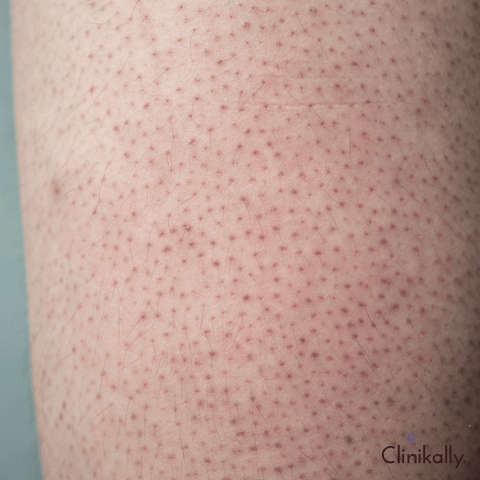
Keratin build-up and "strawberry skin" are two separate conditions that can affect the skin.
Keratin build-up, also known as hyperkeratosis, is a condition in which there is an excessive build-up of keratin protein in the skin. This can result in rough, scaly patches of skin that may be itchy or uncomfortable. Hyperkeratosis can occur in various areas of the body, including the soles of the feet, palms of the hands, and the scalp.
"Strawberry skin" is a term used to describe the appearance of small, red bumps on the skin, typically on the thighs or upper arms. This condition is formally known as keratosis pilaris, and it is caused by a buildup of keratin in the hair follicles. The bumps may feel rough or slightly bumpy, but they are generally harmless and do not cause any discomfort.
Both conditions can be treated with exfoliation and moisturization. For hyperkeratosis, a doctor may prescribe a topical cream or ointment to help soften and remove the excess keratin. For keratosis pilaris, using a gentle exfoliating scrub and moisturizing regularly can help reduce the appearance of the bumps. In some cases, a doctor may also prescribe a topical treatment to help reduce inflammation and redness.
How exfoliation can help with strawberry skin
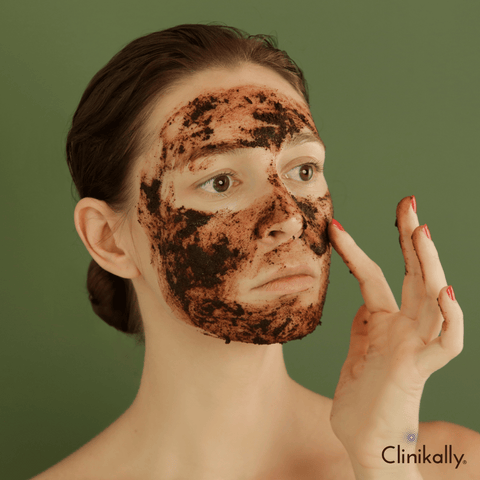
"Strawberry skin" is a common term used to describe the appearance of small, darkened spots on the skin. This condition is medically known as keratosis pilaris, and it occurs when the skin produces excess keratin, a protein that protects the skin from infection and other harmful agents.
Exfoliation can be helpful in improving the appearance of strawberry skin. By gently removing the build-up of dead skin cells, exfoliation can help unclog the hair follicles, which can reduce the appearance of the darkened spots. Here are some ways you can exfoliate your skin to help with strawberry skin:
-
Physical exfoliation: This involves using a scrub or brush to manually remove dead skin cells. Look for products that contain gentle exfoliants such as sugar, salt, or finely ground nuts, and use them in a circular motion to buff away the dead skin.
-
Chemical exfoliation: This involves using products that contain alpha-hydroxy acids (AHAs) or beta-hydroxy acids (BHAs) to dissolve the dead skin cells. AHAs are water-soluble and work on the surface of the skin, while BHAs are oil-soluble and penetrate deeper into the pores. Look for products that contain glycolic acid or salicylic acid, and follow the instructions carefully to avoid irritation.
-
Dry brushing: This involves using a dry brush with natural bristles to gently exfoliate the skin. Start at your feet and work your way up your body, using circular motions to buff away dead skin cells.
Remember to moisturize your skin after exfoliating, as this will help keep it soft and smooth. If you have severe strawberry skin, it's best to see a dermatologist for treatment options.
Treating Strawberry Skin with Skincare
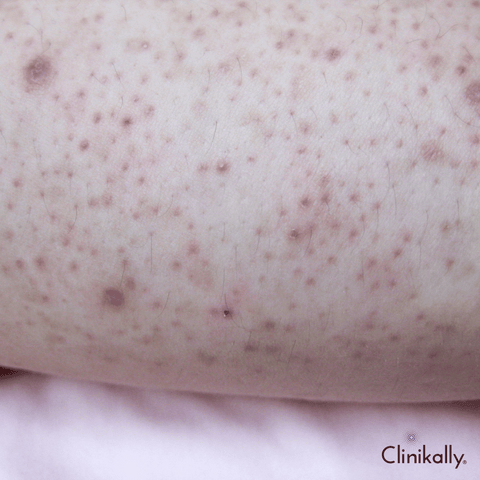
Strawberries are a delicious fruit that is also rich in antioxidants, vitamins, and minerals. The skin of the strawberry is packed with nutrients, and it is essential to treat it with care when consuming it or using it for skincare.
Here are some tips for treating strawberry skin with skincare:
-
Gentle Cleansing: When cleansing your skin, use a gentle cleanser that is free from harsh chemicals and sulfates. A gentle cleanser will remove dirt and impurities from your skin without stripping it of its natural oils.
-
Exfoliation: Exfoliating your skin with a strawberry scrub can help to remove dead skin cells, leaving your skin looking fresh and glowing. To make a strawberry scrub, mash up a few strawberries and mix them with sugar or salt. Gently massage the scrub onto your skin and rinse it off with warm water.
-
Toning: After cleansing and exfoliating, use a toner to help balance your skin's pH levels. Look for a toner that is alcohol-free and contains natural ingredients like witch hazel or rosewater.
-
Moisturizing: Moisturizing your skin with a strawberry-based lotion or cream can help to keep it hydrated and supple. Look for a moisturizer that contains strawberry extract or oil, which can help to soothe and protect your skin.
-
Protection: Protect your skin from the sun's harmful rays by using a sunscreen with SPF 30 or higher. Strawberries contain vitamin C, which can help to protect your skin from damage caused by UV rays, but it is still essential to wear sunscreen daily.
In summary, treating strawberry skin with skincare involves gentle cleansing, exfoliation, toning, moisturizing, and protection from the sun. By taking care of your skin with natural, nourishing ingredients, you can help to keep it looking healthy and radiant.
Acne and Blackheads: Common Issues with Strawberry Skin

"Strawberry skin" is a colloquial term used to describe skin with visible pores and tiny red or black spots, which resemble the seeds on a strawberry. This condition is also known as open comedones or simply, open pores. Acne and blackheads are common issues that are associated with strawberry skin.
Acne is a skin condition that occurs when the hair follicles become clogged with oil and dead skin cells. This can cause pimples, blackheads, whiteheads, and other types of blemishes. Acne is most common in teenagers, but it can also affect people of all ages.
Blackheads, also known as open comedones, are small, dark spots that form on the skin when oil and dead skin cells clog the hair follicles. Blackheads can be especially noticeable on the nose, chin, and forehead. They are a type of acne, but unlike pimples, they are not inflamed.
People with strawberry skin are more prone to developing blackheads and acne because their pores are more visible and may become clogged more easily. To prevent and treat these issues, it's important to establish a good skincare routine that includes regular cleansing, exfoliating, and moisturizing.
Some tips for managing acne and blackheads on strawberry skin include:
-
Cleansing regularly with a gentle, non-comedogenic cleanser to remove oil, dirt, and makeup.
-
Exfoliating with a gentle scrub or chemical exfoliant to remove dead skin cells and unclog pores.
-
Using products that contain salicylic acid or benzoyl peroxide to treat and prevent acne.
-
Avoiding oily or greasy cosmetics and hair products that can clog pores.
-
Keeping hair and hands away from the face to prevent transferring oils and bacteria to the skin.
-
Using a non-comedogenic moisturizer to keep the skin hydrated without clogging pores.
-
Seeing a dermatologist if acne and blackheads persist or become severe.
The Importance of a Consistent Skincare Routine for Strawberry Skin

Consistency is key when it comes to maintaining healthy, glowing skin, especially if you have strawberry skin. A consistent skincare routine can help reduce the appearance of open pores, prevent acne and blackheads, and promote overall skin health. Here are some reasons why a consistent skincare routine is important for strawberry skin:
-
Prevents clogged pores: A consistent skincare routine that includes cleansing, exfoliating, and moisturizing can help prevent clogged pores, which are a common issue for people with strawberry skin. Clogged pores can lead to acne, blackheads, and other blemishes, which can be difficult to get rid of.
-
Promotes skin renewal: Regular exfoliation helps remove dead skin cells and promotes cell turnover, which can help reduce the appearance of open pores and improve skin texture. This can also help prevent the build-up of oil and dirt that can lead to clogged pores.
-
Balances oil production: Using skincare products that are designed for your skin type can help balance oil production and prevent excess oil build-up. This can help prevent clogged pores and reduce the appearance of open pores.
-
Helps maintain skin health: A consistent skincare routine can help maintain the health of your skin by providing it with the essential nutrients it needs to stay hydrated, supple, and healthy. This can help prevent premature aging, reduce the appearance of fine lines and wrinkles, and improve skin tone.
-
Boosts confidence: When you have healthy, glowing skin, you feel more confident and self-assured. A consistent skincare routine can help you achieve the radiant, healthy-looking skin that you desire, which can boost your confidence and improve your overall well-being.
In conclusion, a consistent skincare routine is essential for maintaining healthy, glowing skin, especially if you have strawberry skin. By following a simple routine that includes cleansing, exfoliating, moisturizing, and using products that are designed for your skin type, you can prevent clogged pores, reduce the appearance of open pores, and promote overall skin health.
Targeting Strawberry Skin with Glycolic Acid

Glycolic acid is a type of alpha-hydroxy acid (AHA) that is commonly used in skincare products to exfoliate the skin and improve its texture. It is particularly effective for people with strawberry skin because it can help reduce the appearance of open pores and prevent acne and blackheads. Here's how glycolic acid can target strawberry skin:
-
Exfoliation: Glycolic acid works by breaking down the bonds that hold dead skin cells together, which helps to exfoliate the skin. This can help remove the build-up of oil, dirt, and dead skin cells that can clog pores and lead to acne and blackheads.
-
Skin Renewal: Glycolic acid can also stimulate the production of new skin cells, which can help improve skin texture and reduce the appearance of open pores. This can also help prevent the build-up of oil and dirt that can lead to clogged pores.
-
Oil Control: Glycolic acid can help regulate sebum production, which is the natural oil produced by the skin. This can help prevent excess oil build-up, which can contribute to clogged pores and acne.
-
Brightening: Glycolic acid can help brighten the skin by reducing the appearance of hyperpigmentation and age spots. This can help even out skin tone and give the skin a more youthful, radiant appearance.
When using glycolic acid for strawberry skin, it's important to start with a low concentration and gradually work your way up to higher concentrations over time. This can help prevent irritation and sensitivity. It's also important to follow up with a good moisturizer to keep the skin hydrated and prevent dryness.
In conclusion, glycolic acid can be an effective tool for targeting strawberry skin. By exfoliating the skin, promoting skin renewal, regulating oil production, and brightening the skin, glycolic acid can help reduce the appearance of open pores, prevent acne and blackheads, and promote overall skin health.
Salicylic Acid: A Powerful Ingredient for Strawberry Skin
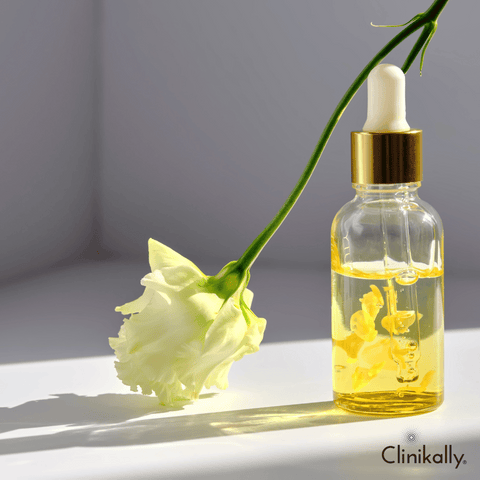
Salicylic acid is a type of beta-hydroxy acid (BHA) that is commonly used in skincare products to treat acne and oily skin. It is particularly effective for people with strawberry skin because it can help unclog pores, reduce the appearance of open pores, and prevent acne and blackheads. Here's how salicylic acid can target strawberry skin:
-
Unclogging pores: Salicylic acid is oil-soluble, which means it can penetrate deep into the pores and dissolve the build-up of oil, dirt, and dead skin cells that can clog them. This can help unclog pores and prevent the formation of acne and blackheads.
-
Reducing inflammation: Salicylic acid has anti-inflammatory properties, which can help reduce the redness and inflammation associated with acne. This can help improve the overall appearance of the skin and prevent scarring.
-
Regulating oil production: Salicylic acid can help regulate sebum production, which is the natural oil produced by the skin. This can help prevent excess oil build-up, which can contribute to clogged pores and acne.
-
Exfoliation: Salicylic acid can also help exfoliate the skin, which can improve skin texture and reduce the appearance of open pores. This can also help prevent the build-up of oil and dirt that can lead to clogged pores.
When using salicylic acid for strawberry skin, it's important to start with a low concentration and gradually work your way up to higher concentrations over time. This can help prevent irritation and sensitivity. It's also important to follow up with a good moisturizer to keep the skin hydrated and prevent dryness.
In conclusion, salicylic acid can be a powerful ingredient for targeting strawberry skin. By unclogging pores, reducing inflammation, regulating oil production, and exfoliating the skin, salicylic acid can help reduce the appearance of open pores, prevent acne and blackheads, and promote overall skin health.
The Benefits of Retinoids for Strawberry Skin
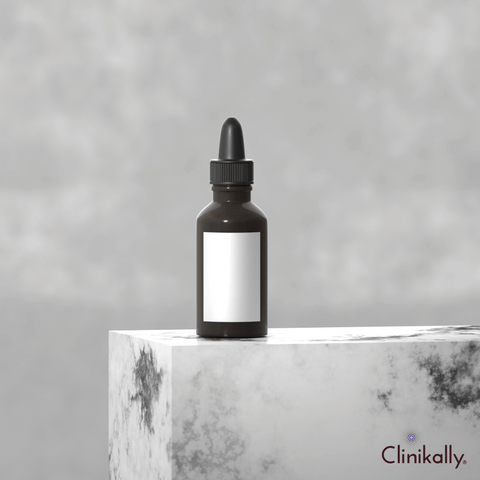
Retinoids are a class of vitamin A derivatives that are commonly used in skincare products to treat acne, reduce the appearance of fine lines and wrinkles, and improve overall skin texture. They can also be beneficial for people with strawberry skin because they can help reduce the appearance of open pores and prevent acne and blackheads. Here's how retinoids can benefit strawberry skin:
-
Exfoliation: Retinoids can help exfoliate the skin by increasing cell turnover and promoting the shedding of dead skin cells. This can help reduce the build-up of oil, dirt, and dead skin cells that can clog pores and lead to acne and blackheads.
-
Regulating oil production: Retinoids can also help regulate sebum production, which is the natural oil produced by the skin. This can help prevent excess oil build-up, which can contribute to clogged pores and acne.
-
Collagen production: Retinoids can stimulate the production of collagen, which is a protein that is essential for skin health and elasticity. This can help improve skin texture and reduce the appearance of fine lines and wrinkles.
-
Anti-inflammatory: Retinoids have anti-inflammatory properties, which can help reduce the redness and inflammation associated with acne. This can help improve the overall appearance of the skin and prevent scarring.
When using retinoids for strawberry skin, it's important to start with a low concentration and gradually work your way up to higher concentrations over time. This can help prevent irritation and sensitivity. It's also important to follow up with a good moisturizer to keep the skin hydrated and prevent dryness.
In conclusion, retinoids can be a beneficial ingredient for targeting strawberry skin. By exfoliating the skin, regulating oil production, stimulating collagen production, and reducing inflammation, retinoids can help reduce the appearance of open pores, prevent acne and blackheads, and improve overall skin health.
Hydration and Antioxidants for Strawberry Skin
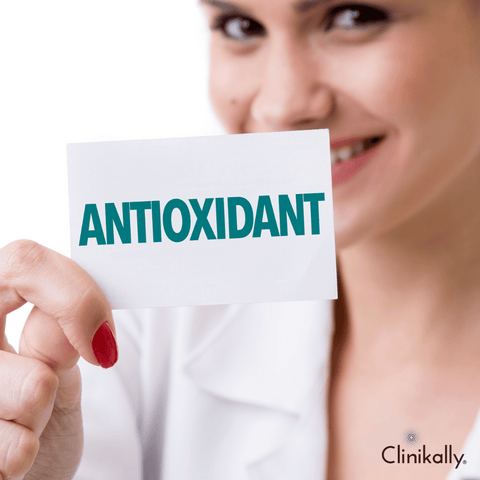
Hydration and antioxidants are important components of any skincare routine, and they can be particularly beneficial for people with strawberry skin. Here's how they can help:
-
Hydration: Keeping the skin hydrated is important for maintaining its health and preventing dryness and irritation. Moisturizing can also help reduce the appearance of open pores by plumping up the skin and improving its texture. Look for lightweight, non-comedogenic moisturizers that won't clog pores. Hyaluronic acid is a great hydrating ingredient to look for, as it can hold up to 1000 times its weight in water, helping to keep the skin hydrated and plump.
-
Antioxidants: Antioxidants can help protect the skin from damage caused by free radicals, which are unstable molecules that can damage skin cells and lead to premature aging. Vitamin C is a powerful antioxidant that can help brighten the skin, reduce the appearance of fine lines and wrinkles, and improve overall skin texture. It can also help reduce inflammation and prevent acne.
-
Sun protection: Protecting the skin from the sun is essential for maintaining its health and preventing damage that can contribute to strawberry skin. Look for a broad-spectrum sunscreen with an SPF of at least 30, and apply it every day, even on cloudy days or when you're indoors.
In conclusion, hydration and antioxidants are important components of any skincare routine, and they can be particularly beneficial for people with strawberry skin. By keeping the skin hydrated, protecting it from damage caused by free radicals, and using sun protection, you can help reduce the appearance of open pores, prevent acne and blackheads, and improve overall skin health.
Prevention and Lifestyle Changes for Strawberry Skin

Prevention and lifestyle changes can play a significant role in reducing the appearance of strawberry skin. Here are some tips for preventing and managing strawberry skin:
-
Cleanse regularly: Keeping the skin clean is essential for preventing the build-up of oil, dirt, and dead skin cells that can clog pores and lead to strawberry skin. Use a gentle, non-comedogenic cleanser twice a day to keep the skin clean and free from impurities.
-
Exfoliate: Regular exfoliation can help remove dead skin cells and prevent the build-up of oil and dirt in the pores. Use a gentle exfoliating scrub once or twice a week to help reduce the appearance of open pores and prevent blackheads.
-
Avoid harsh products: Harsh products, such as alcohol-based toners and astringents, can strip the skin of its natural oils and cause irritation. Avoid using products that contain harsh ingredients, and opt for gentle, non-irritating formulas instead.
-
Diet: Eating a healthy, balanced diet can help improve overall skin health and prevent strawberry skin. Foods that are rich in antioxidants, such as fruits and vegetables, can help protect the skin from damage caused by free radicals.
-
Hydration: Drinking plenty of water is important for maintaining skin health and preventing dryness and irritation. Aim to drink at least eight glasses of water a day, and consider using a hydrating serum or moisturizer to keep the skin hydrated.
-
Sun protection: Protecting the skin from the sun is essential for preventing damage that can contribute to strawberry skin. Wear a broad-spectrum sunscreen with an SPF of at least 30, and avoid prolonged sun exposure, especially during peak hours.
In conclusion, preventing and managing strawberry skin requires a consistent skincare routine, a healthy diet, and lifestyle changes such as avoiding harsh products and protecting the skin from the sun. By following these tips, you can help reduce the appearance of open pores, prevent acne and blackheads, and improve overall skin health.
Protecting Against UV Damage for Strawberry Skin
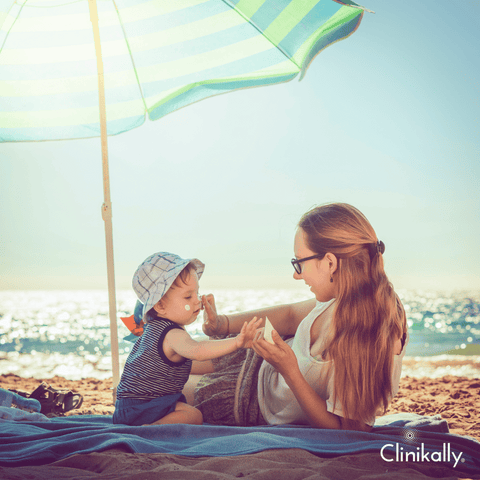
UV damage can contribute to the development of strawberry skin and other skin concerns, such as fine lines, wrinkles, and sunspots. Here are some tips for protecting against UV damage:
-
Wear sunscreen: Sunscreen is essential for protecting the skin from UV damage. Look for a broad-spectrum sunscreen with an SPF of at least 30, and apply it every day, even on cloudy days or when you're indoors. Reapply every two hours or after sweating or swimming.
-
Seek shade: Avoid prolonged sun exposure, especially during peak hours when the sun's rays are strongest. Seek shade under trees, umbrellas, or other forms of shelter when possible.
-
Wear protective clothing: Wear protective clothing, such as long-sleeved shirts, pants, and hats, when spending time outdoors. Look for clothing with a tight weave or built-in UPF protection.
-
Use antioxidants: Antioxidants can help protect the skin from damage caused by free radicals, which are produced by UV exposure. Look for skincare products that contain antioxidants such as vitamin C, vitamin E, and green tea.
-
Avoid tanning beds: Tanning beds emit UV radiation that can damage the skin and increase the risk of skin cancer. Avoid using tanning beds, and opt for self-tanning products if you want a bronzed look.
In conclusion, protecting against UV damage is essential for preventing the development of strawberry skin and other skin concerns. By wearing sunscreen, seeking shade, wearing protective clothing, using antioxidants, and avoiding tanning beds, you can help protect your skin and maintain its health and appearance.
The Role of Diet in Preventing Strawberry Skin
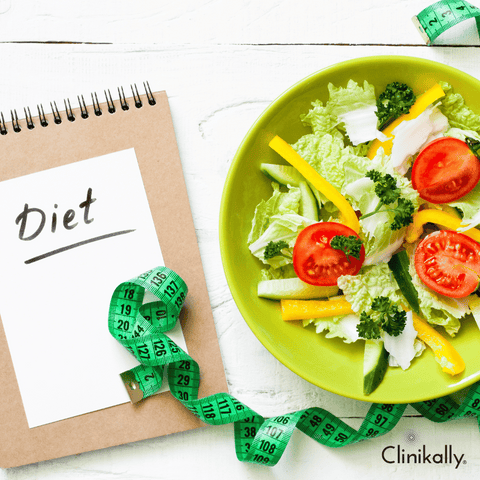
Diet can play a significant role in preventing strawberry skin. Here are some dietary recommendations that can help maintain healthy skin:
-
Eat a balanced diet: Eating a balanced diet that includes a variety of fruits, vegetables, whole grains, and lean protein can help provide the nutrients your skin needs to stay healthy.
-
Consume antioxidant-rich foods: Antioxidants are essential for protecting the skin from damage caused by free radicals. Foods that are high in antioxidants include berries, dark leafy greens, and colorful fruits and vegetables such as carrots, sweet potatoes, and bell peppers.
-
Drink plenty of water: Staying hydrated is important for maintaining healthy skin. Drinking plenty of water can help keep the skin hydrated and prevent dryness, which can exacerbate strawberry skin.
-
Limit processed and high-sugar foods: Processed foods and foods that are high in sugar can contribute to inflammation in the body, which can lead to skin issues such as acne and strawberry skin. Limiting these types of foods can help improve overall skin health.
-
Incorporate healthy fats: Healthy fats, such as those found in fish, nuts, and seeds, can help improve skin elasticity and moisture levels. Incorporating these foods into your diet can help maintain healthy, supple skin.
In conclusion, maintaining a healthy diet that includes antioxidant-rich foods, plenty of water, and healthy fats can help prevent strawberry skin and other skin concerns. Limiting processed and high-sugar foods can also help improve overall skin health.

































1 comment
Cc
Excellent article on strawberry skin.
I’m keen to improve my skin so thankyou.
Excellent article on strawberry skin.
I’m keen to improve my skin so thankyou.